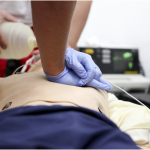Spinal disorders and back pain are common issues affecting active adults and athletes alike. These conditions can significantly impact performance and quality of life, whether caused by wear and tear, injury, or improper biomechanics. Orthopedics offers specialized approaches to address these challenges effectively. Here is information on how orthopedic care can help by focusing on diagnostics, treatment approaches, and rehabilitation strategies:
Diagnosing Spinal Disorders
Proper evaluation is a key step in managing spinal disorders and back pain. For active individuals, orthopedics often rely on advanced imaging techniques, such as X-rays or MRIs, alongside physical examinations. These tools help pinpoint the underlying issue, whether it involves herniated discs, vertebral misalignment, or soft tissue strain.
Sports medicine professionals may also assess movement patterns and posture to identify mechanical stress contributing to spinal discomfort. Evaluations often include functional movement screenings, which provide insight into how the spine reacts during physical activity. Detailed and customized diagnoses become possible by combining orthopedic expertise with sports-specific assessments.
Treating with Orthopedics
Orthopedic-focused treatment strategies aim to reduce back pain, restore proper spinal function, and prevent further complications. Non-invasive methods form the foundation of most initial care plans, especially for those heavily involved in athletic activity. Here are a few common therapies:
-
Physical Therapy – Physical therapy often forms a significant component of orthopedic care. Therapists guide patients through strengthening and mobility exercises designed to enhance spinal alignment and stabilize surrounding muscles. This approach not only alleviates pain but also supports long-term performance by improving biomechanics.
-
Manual Therapy – Manual therapy techniques, such as joint mobilization or soft tissue manipulation, may target tension or restrictions in the spine. These methods are particularly effective for athletes experiencing limited range of motion or muscular stiffness from repetitive activities.
-
Orthotic Devices – Orthotics, such as braces or supports, can be utilized to stabilize affected areas, preventing exacerbation of symptoms during rehabilitation. For athletes, these aids might be tailored to accommodate high-intensity activities while protecting the spine.
Should discomfort persist or escalate, orthopedic specialists might recommend advanced interventions, including injections to manage inflammation or minimally invasive procedures to address issues like herniated discs.
Rehabilitating for Enhanced Performance
Rehabilitation focuses on restoring function and reducing the risk of re-injury. Orthopedic care integrates sports-specific rehabilitation protocols to suit athletes’ unique physical demands. These programs include posture correction, core strengthening, and sport-specific drills. Swimmers with lumbar strain might focus on exercises that stabilize the lower back while maintaining the flexibility needed for optimal stroke mechanics. Runners recovering from spinal issues might work on gait training and hip alignment to decrease stress on the spine during movement.
During post-treatment stages, orthopedic specialists often collaborate with sports professionals to monitor progress and implement injury-prevention strategies. They can provide further guidance on how to improve form to prevent re-injury. This comprehensive approach allows athletes and active individuals to safely return to training or competition while minimizing setbacks.
Find a Sports Medicine Doctor
Orthopedics bridges the gap between recovery and peak performance for individuals managing spinal disorders or back pain. An orthopedic sports medicine approach offers effective care tailored to active lifestyles through specialized diagnostics, evidence-based treatments, and targeted rehabilitation strategies. If spinal discomfort or back pain is affecting your daily activities or athletic performance, exploration of orthopedic care could offer valuable support in managing and overcoming these challenges.







